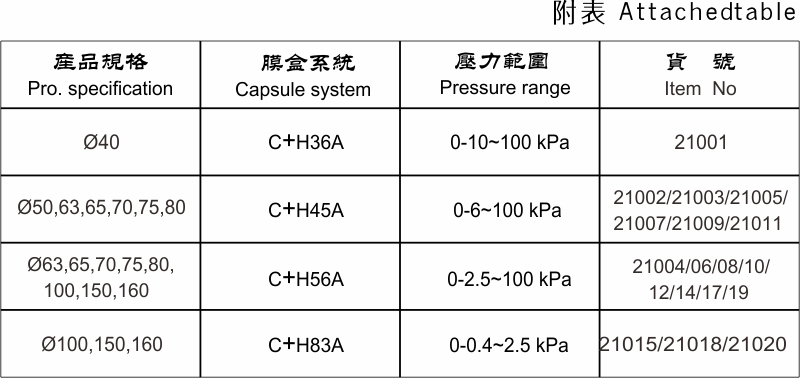
Nov . 05, 2024 23:11 Back to list
Understanding Medical Oxygen Regulator Pressure Gauge Functionality and Importance
Understanding Medical Oxygen Regulator Pressure Gauges
In the healthcare sector, the efficient administration of oxygen therapy is crucial for patients with respiratory conditions. One vital component of oxygen delivery systems is the medical oxygen regulator, which includes a pressure gauge. This device not only ensures that patients receive the right amount of oxygen but also provides essential information to healthcare professionals regarding the supply and status of the oxygen tank. In this article, we will explore the components, functionality, and importance of medical oxygen regulator pressure gauges.
Components of a Medical Oxygen Regulator
A medical oxygen regulator typically consists of several key components the inlet connection, the pressure gauge, the flow meter, and the outlet connector.
1. Inlet Connection This part connects the regulator to the oxygen tank. It is designed to securely fasten to ensure that no oxygen escapes during the transfer. 2. Pressure Gauge This is the critical component that displays the pressure of the oxygen tank. There are usually two gauges one showing the tank pressure and the other the delivery pressure.
3. Flow Meter This component allows healthcare providers to control the rate at which oxygen is delivered to the patient, measured in liters per minute (LPM).
4. Outlet Connector This is where the oxygen exits the regulator and is actually delivered to the patient via a mask or nasal cannula.
Functionality of the Pressure Gauge
The pressure gauge on a medical oxygen regulator serves two main functions monitoring the oxygen supply and ensuring patient safety.
1. Monitoring Oxygen Supply The primary role of the pressure gauge is to inform the medical staff about the remaining pressure in the oxygen tank. Tanks are typically filled to about 2,000 psi when full, and the gauge allows the staff to gauge how much oxygen is left. This is crucial for planning purposes, particularly in emergency situations when real-time data is necessary.
2. Ensuring Patient Safety An incorrect oxygen pressure can lead to under- or over-delivery of oxygen, both of which can have serious consequences for patients. The pressure gauge helps regulate the flow and ensures that the oxygen delivery systems operate within safe limits. It provides visual confirmation of the oxygen delivery pressure, allowing healthcare providers to adjust settings as needed for optimal care.
Importance in Clinical Settings
medical oxygen regulator pressure gauge

Medical oxygen regulator pressure gauges are essential in various clinical settings, including hospitals, home healthcare, and emergency services
.1. In Hospitals In acute care settings, where timely and accurate gas delivery is crucial, pressure gauges help monitor patients with conditions like chronic obstructive pulmonary disease (COPD), asthma, or during post-operative recovery.
2. Home Healthcare For patients requiring long-term oxygen therapy at home, caregivers need to regularly check the pressure gauge to ensure that the supply is adequate and safe for continued use.
3. In Emergency Services In emergency medical services (EMS), time is of the essence. Pressure gauges provide quick and immediate information on oxygen availability, allowing paramedics to respond more effectively to critical situations.
Maintenance and Best Practices
To ensure the accuracy and longevity of medical oxygen regulator pressure gauges, healthcare professionals should follow a few maintenance best practices
1. Regular Calibration Pressure gauges should undergo routine calibration checks to ensure their readings are accurate.
2. Visual Inspections Regular inspections can help spot any signs of wear and tear or damage, preventing potential leaks and inaccuracies.
3. Cleanliness Keeping the regulator clean and free of contaminants is vital to maintaining proper function and safety.
Conclusion
In summary, medical oxygen regulator pressure gauges play a pivotal role in ensuring that patients receive the correct amount of oxygen safely and effectively. Their functionality extends beyond mere monitoring; they are integral to patient safety and care. Understanding how these devices work can empower healthcare professionals to provide the best care practices and enhance patient outcomes. Regular maintenance and adherence to best practices ensure the reliability of these essential components in oxygen therapy. As we continue to expand our understanding of respiratory care, the significance of accurate and efficient medical tools like oxygen regulator pressure gauges will remain at the forefront of effective patient management.
-
High-Precision Mass Diaphragm Pressure Gauge - Reliable & Durable Solutions
NewsJun.10,2025
-
Explain Diaphragm Pressure Gauge Expert Guide, Top Manufacturers & Quotes
NewsJun.10,2025
-
Affordable Differential Pressure Gauge Prices in China Top Manufacturers
NewsJun.10,2025
-
Reliable Water Fire Extinguisher Pressure Gauges for Safety
NewsJun.10,2025
-
Durable Diaphragm Protection Pressure Gauges Get Quote
NewsJun.09,2025
-
WIKA Differential Pressure Gauge with Switch Reliable Monitoring & Control
NewsJun.09,2025
